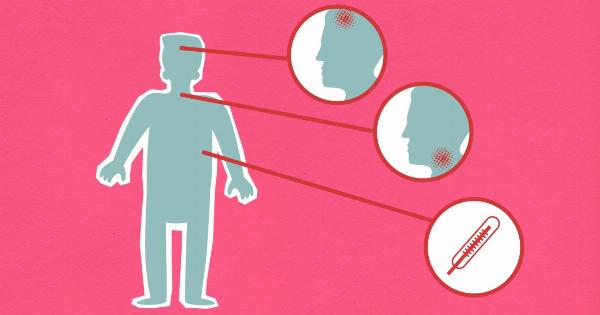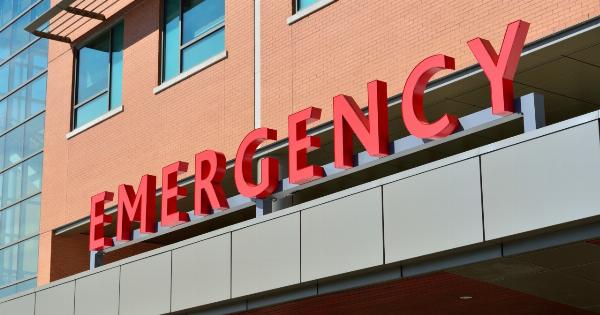Thromboembolism is a serious health condition that occurs when a blood clot, known as a thrombus, forms in a blood vessel and travels to another part of the body through the bloodstream.
This can lead to life-threatening consequences if not diagnosed and treated promptly. Often referred to as a silent threat, thromboembolism can strike without warning, making it all the more crucial to raise awareness about this condition and its potential risks.
What Causes Thromboembolism?
Thromboembolism can be caused by various factors, including:.
1. Deep Vein Thrombosis (DVT)
DVT is a condition where blood clots form in the deep veins of the legs, pelvis, or arms. These clots can break loose and travel to other parts of the body, causing a thromboembolism.
Prolonged immobilization, such as during long flights or bed rest after surgery, increases the risk of DVT.
2. Atrial Fibrillation
Atrial fibrillation is an abnormal heart rhythm that can lead to the formation of blood clots within the heart. If a clot dislodges and travels through the bloodstream, it can cause a thromboembolism.
3. Smoking
Smoking damages blood vessels and increases the risk of clot formation, potentially leading to thromboembolism.
4. Obesity
Obesity is associated with inflammation and changes in blood clotting factors, making individuals more susceptible to thromboembolism.
5. Hormonal Contraceptives
Some forms of hormonal contraceptives, particularly those containing estrogen, increase the risk of blood clots and thromboembolism, especially in individuals with additional risk factors.
6. Inherited or Acquired Blood Disorders
Certain genetic or acquired conditions, such as Factor V Leiden mutation or antiphospholipid syndrome, can disrupt the normal clotting process and contribute to thromboembolism.
Recognizing the Symptoms of Thromboembolism
Thromboembolism can present with a range of symptoms depending on the location and size of the clot. Some common symptoms include:.
1. Pain and Swelling
Localized pain, tenderness, and swelling may occur, especially in the legs or arms affected by the clot.
2. Shortness of Breath
If a clot travels to the lungs, it can cause a pulmonary embolism, resulting in sudden shortness of breath, chest pain, and coughing up blood.
3. Rapid Heartbeat
A racing or irregular heartbeat may indicate a possible clot or an underlying heart condition leading to thromboembolism.
4. Neurological Symptoms
In cases where a clot affects blood flow to the brain, symptoms such as sudden weakness or numbness in the face, arm, or leg, difficulty speaking, and confusion may arise.
Preventing Thromboembolism
While certain risk factors for thromboembolism, such as inherited blood disorders, cannot be modified, there are several preventive measures individuals can take:.
1. Regular Exercise
Maintaining an active lifestyle reduces the risk of developing blood clots. Engaging in activities that promote circulation, such as walking or swimming, can be particularly beneficial.
2. Quit Smoking
Stopping smoking is vital for reducing the risk of thromboembolism and countless other health issues.
3. Healthy Diet
A well-balanced diet rich in fruits, vegetables, whole grains, and lean proteins helps maintain a healthy weight and supports overall cardiovascular health.
4. Stay Hydrated and Avoid Prolonged Immobility
Drinking an adequate amount of water and avoiding extended periods of immobility, especially during long flights or recovery from surgery, help prevent blood from pooling and clotting.
5. Medication and Medical Intervention
For individuals with specific medical conditions or high-risk factors, doctors may prescribe blood-thinning medications or other interventions to prevent thromboembolism.
Early Detection and Treatment
Early detection and prompt treatment are crucial in preventing the adverse consequences of thromboembolism. If you experience any concerning symptoms or possess risk factors, seeking medical attention is essential.
1. Diagnostic Tests
Doctors may recommend various tests to diagnose thromboembolism, including blood tests, ultrasound, computed tomography (CT) scan, or magnetic resonance imaging (MRI).
2. Medications
Treatment often involves blood-thinning medications, such as anticoagulants or antiplatelet drugs, to prevent further clot formation and reduce the risk of complications.
3. Surgical Interventions
In severe cases or when medication alone is insufficient, doctors may consider surgical interventions, such as thrombectomy (surgical removal of the clot) or vena cava filter placement (a device to prevent clots from reaching the lungs).
Conclusion
Thromboembolism poses a significant risk to individuals of all ages and backgrounds, with potentially severe or fatal consequences. Being informed about the causes, symptoms, and preventive measures is crucial in mitigating this silent threat.
By adopting healthy lifestyle choices and promptly seeking medical attention when necessary, individuals can reduce their risk of thromboembolism and protect their heart health.


























